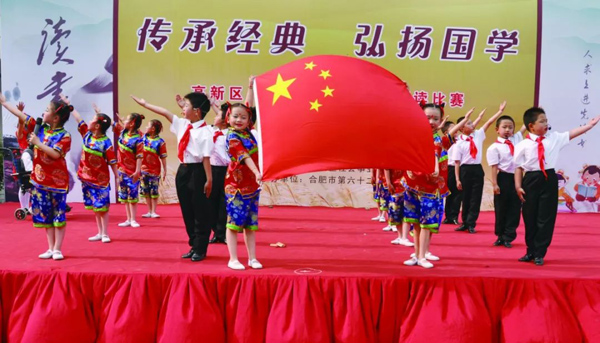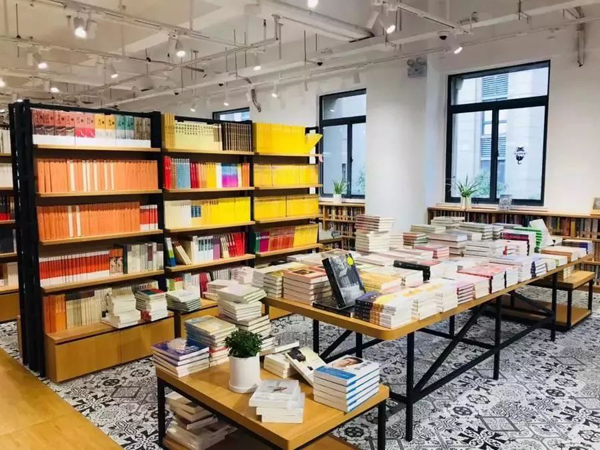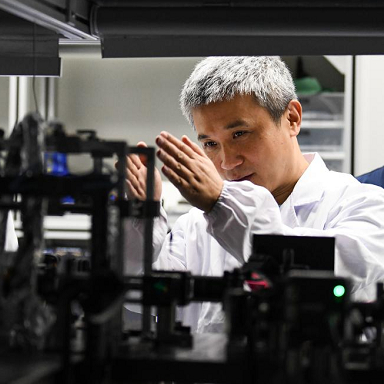Striving for the public good

Students from a local primary school put on a singing show. [Photo from WeChat account hefeigaoxinfabu]
The vivid scenes of daily life that the Hefei National High-tech Industry Development Zone pictures for local families are no longer just an imagination.
Children can go to nearby schools for high-quality education; middle-aged people can start their working day in surrounding office buildings and industrial parks; while senior citizens can take a stroll encircled by lakeside sceneries and natural forests.
With unremitting efforts to develop education, culture, and healthcare capabilities, the zone has shaped itself into a modern integration that is friendly to both industry and daily life.
By the end of 2017, 17 schools of compulsory education were set up at the zone, housing over 12,000 students, 5,800 kids, and 850 faculty members. The continuous investment of 797 million yuan ($116 million) in the past five years has facilitated the zone with various modern education devices.
Moreover, 16 new primary and secondary schools have been put on the agenda. The zone is also actively promoting to co-run an affiliated school with the University of Science and Technology of China, as well as calling for possible cooperation between the Canadian International School of Hefei and the local tech giant iFlytek.
"By 2020, the zone will see a remarkable rise in its educational capability, ascending to the forefront among local others," an official said.

A reading space at the zone [Photo from WeChat account hefeigaoxinfabu]
In the past three years, the zone has also housed some 40 medical establishments at its west corner, successfully filling the regional health service gap. The Hefei Ionic Medical Center has become a new name card of the zone, with its treatment and research strength enjoying wide fame across the globe.
The zone is also endeavoring to create a rich cultural climate. Two large reading areas were added, covering a total space of 1,300 square meters and housing over 60,000 books.
A "15-minute reading circle" is under preparation, which, once completed, will enable local residents with less than 15-minute walk or ride to the nearest libraries and bookstores.
"The zone is forging ahead with international perspectives. It will focus on enhancing its overall strength, while also keeping the general public's well-being in mind," said Song Daojun, director of the zone's administrative committee.






